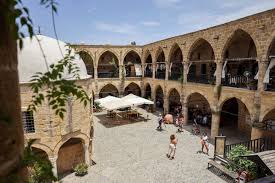
The division of Cyprus occurred in 1974 following a coup d’état by Greek Cypriot nationalists and a subsequent Turkish military intervention. The coup aimed to unite Cyprus with Greece, while the Turkish intervention sought to protect the Turkish Cypriot minority. This led to the establishment of the Turkish Republic of Northern Cyprus (TRNC), recognized only by Turkey, and the Republic of Cyprus in the south.
The Green Line
The island remains divided by the “Green Line,” a United Nations buffer zone that separates the Greek Cypriot south from the Turkish Cypriot north. This division has created significant economic, social, and political disparities between the two regions.
See Here:
Efforts at Reconciliation
UN-Led Negotiations
Over the years, there have been numerous rounds of negotiations facilitated by the United Nations aimed at reunifying the island. These talks have often stalled due to deep-seated mistrust and disagreements over governance, property rights, and security arrangements.
Confidence-Building Measures
In recent years, various confidence-building measures have been implemented to foster cooperation between the two communities. These include the opening of border crossings, joint cultural and sporting events, and bi-communal projects aimed at improving infrastructure and services.
The Role of Civil Society
Grassroots Movements
Civil society organizations have played a crucial role in keeping the hope of reunification alive. Grassroots movements, involving both Greek and Turkish Cypriots, have been actively working towards promoting peace and understanding. These groups organize dialogue sessions, educational programs, and community projects to bridge the divide.
Youth Engagement
Engaging the younger generation is seen as key to a lasting solution. Educational programs and exchange visits are aimed at fostering a sense of common identity and mutual respect among young Cypriots. By focusing on the future, these initiatives hope to break the cycle of division and build a more united Cyprus.
Economic Implications
Potential Benefits
A reunified Cyprus could reap significant economic benefits. The elimination of the division would likely boost tourism, trade, and investment, leading to increased prosperity for both communities. Additionally, the island’s strategic location and natural resources, such as offshore gas reserves, could be better leveraged in a unified state.
Challenges Ahead
However, economic integration poses challenges. There are disparities in economic development between the north and the south, and addressing issues like property restitution and compensation remains contentious. Ensuring equitable economic development will be crucial for a sustainable reunification.
Political Dynamics
Regional Influences
The geopolitical interests of regional powers, including Turkey, Greece, and the European Union, significantly impact the reunification process. Balancing these influences while addressing the aspirations of both Greek and Turkish Cypriots remains a complex task.
Domestic Politics
Domestic political dynamics within both communities also play a crucial role. Leadership changes, public opinion, and the political will to compromise are all factors that can either advance or hinder the reunification efforts.
Conclusion
The path to a unified Cyprus is fraught with challenges, but the hope for unity persists among many Cypriots. Continued dialogue, grassroots engagement, and international support are essential to overcoming the historical and contemporary obstacles. While the journey towards reunification may be long and complex, the enduring desire for peace and unity offers a beacon of hope for the future of Cyprus





